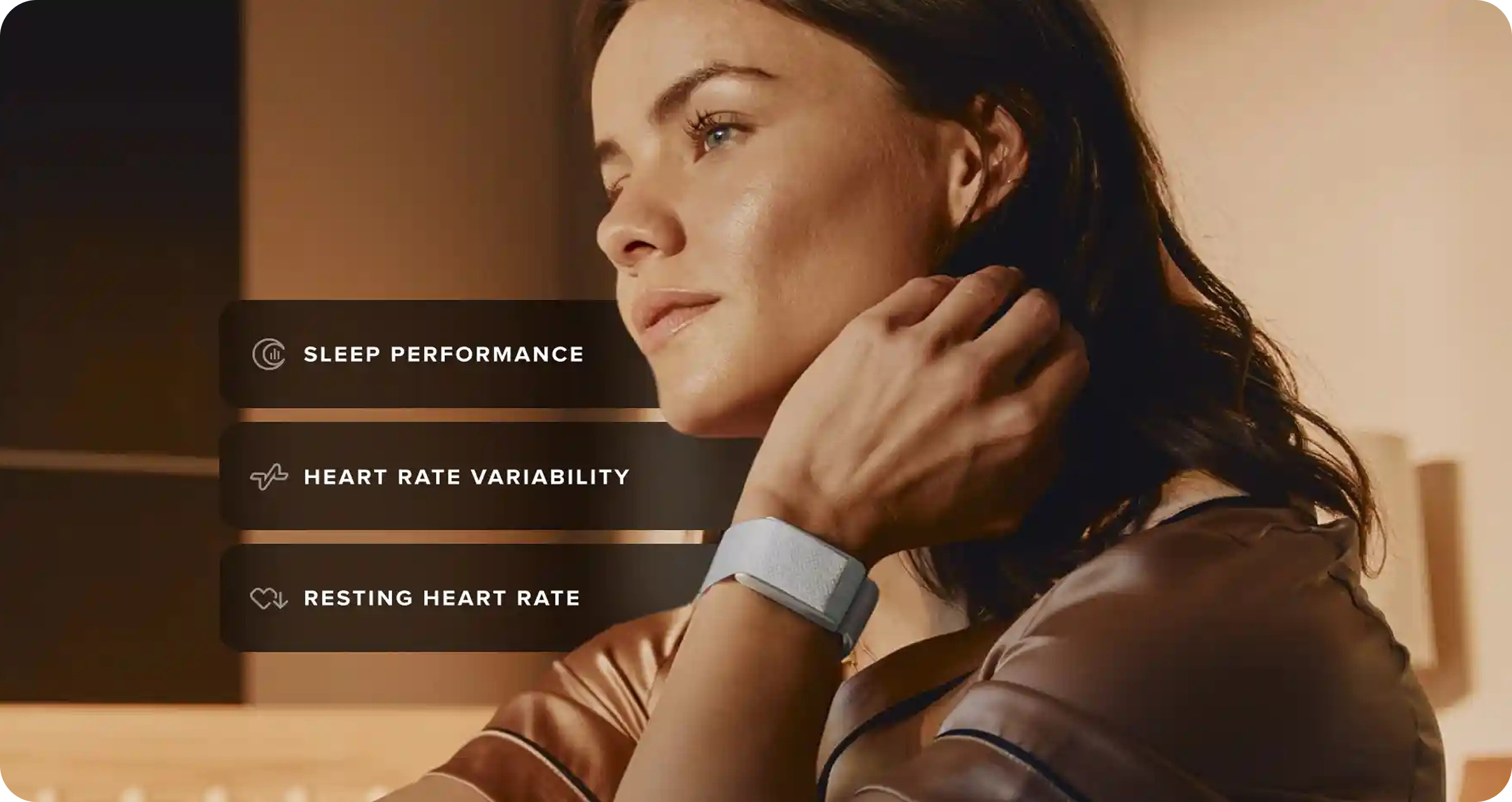Understanding the DAMAGE Severity Index (DSI) Metric with HITIQ's PROTEQT Mouthguard

Athlete Health and Safety is our top priority at HITIQ. With HITIQ’s PROTEQT instrumented mouthguard you now have access to valuable data about your head impacts.
DAMAGE Severity Index (DSI), as measured by HITIQ's PROTEQT mouthguard, is a metric that measures the potential for brain injury during head impacts. It's based on rigorous scientific research and provides a reliable way to quickly estimate brain strain. By using this data, you can gain valuable insights into how to keep safe while playing sports. If a DSI score returns a high value we recommend medical evaluation and advice through our telehealth partners to continue your care.
Specifically, what is DSI?
DSI uses a calculation that estimates the strain on the brain during an impact, and then normalizes that calculation to a 0-100 scale, where a DSI score of 75 or higher indicates a potentially high risk impact and a recommended medical evaluation through the HITIQ PROTEQT App. You can read more about the calculation below.
Why is this important with HITIQ PROTEQT?
Head impacts in sports can sometimes lead to serious brain injuries, even if there are no obvious signs. These injuries can be caused by the brain moving and twisting inside the skull, especially from rotational forces (like a twisting motion) and are less obvious to track.
The HITIQ PROTEQT mouthguard, by measuring DSI, helps us capture these rotational forces and their potential impact on the brain in real time.
What do I do if I have a high DSI Score?
Returning a high DSI score (>75) we recommend that you seek medical evaluation. You can do this through the HITIQ PROTEQT app. There are also subjective questions which help further define your symptoms and may be helpful for medical professionals. We provide the ability to access timely health treatments through the app via HITIQ’s CONNEQT System and our health partners.
By directly linking your personalised head impact data, coupling it with world leading brain health research and calculating risk, HIT IQ is the only end-to-end point of continuous and timely brian health care.
Science and Detail:
The specifics of DSI:
Damage Severity Index (DSI) calculates the “DAMAGE” which stands for "Diffuse Axonal Multi-Axis General Evaluation". It is a validated way of the HITIQ's PROTEQT mouthguard to quickly and accurately estimate the "strain" or stress on your brain during a head impact. It then applies a score of the DAMAGE to the app.
Think of the metric measuring the stretching a rubber band – too much stretching can wear out the matter and can cause damage to the brian tissue.The HITIQ PROTEQT mouthguard uses the DAMAGE Severity Index (DSI) metric to help understand how much "stretching" the brain might experience during an impact.
Stretching can also be referred to as “strain” or, “brain strain”.
How does HITIQ PROTEQT measure DSI?
The PROTEQT mouthguard is equipped with sensors that track how the head moves during an impact, specifically the twisting or rotational motion. This information is then used to calculate the DAMAGE metric, which estimates the strain on the brain. This data is then available for review. This is much faster and simpler than complex computer simulations, allowing for quick assessments of potential injury risk.
Is DSI as measured by PROTEQT validated and reliable?
Yes. The DAMAGE metric is based on solid scientific research by Gabler et al., 2019. It has been validated against a large database of real-world head impacts. This database includes helmet tests, car crash tests, sled tests, and even data from human volunteers. HITIQ uses this validated science to provide the DAMAGE data through the HITIQ PROTEQT mouthguard app.
Confidence Behind PROTEQT's DAMAGE Measurement:
- Extensive Validation: The underlying DAMAGE metric was tested against 1747 different head impacts, showing it's a reliable predictor of brain strain. This research supports the data provided by your HITIQ PROTEQT mouthguard.
- Better than Existing Metrics: Studies have shown that DAMAGE is more accurate in predicting brain strain compared to other, older methods. HITIQ uses this advanced metric in its PROTEQT mouthguard.
- Based on Scientific Principles: DAMAGE is built on the understanding that the brain's response to rotational head motion can be modeled as a "second-order mechanical system." This scientific approach is what powers the data you see from the PROTEQT mouthguard.
What does this mean for me using HITIQ PROTEQT?
- Better Understanding of Impacts: PROTEQT's DAMAGE data helps you understand which hits are more significant and provides insights into potential risks.
- Potential for Improved Safety: By tracking DAMAGE, you can make informed decisions about your child's participation in sports and work with coaches to improve safety.
- Not Just Big Hits: PROTEQT's data considers all kinds of impacts, not just the really big ones. Even smaller, repeated impacts can add up, and the DAMAGE metric helps account for that.
- Focus on Rotational Forces: PROTEQT specifically looks at the twisting or rotational forces that are often the most damaging to the brain.
Ongoing Research and HITIQ PROTEQT:
It's important to remember that we are always learning more about brain impacts and injuries. The DAMAGE metric is a significant step forward, and HITIQ's PROTEQT mouthguard brings that science to you. HITIQ is committed to ongoing development and improvement to enhance the safety of athletes and will continue to refine and update brain health models to ensure the highest order of research is available to you as a customer.
Understanding the DAMAGE Severity Index (DSI) Metric with HITIQ's PROTEQT Mouthguard

Athlete Health and Safety is our top priority at HITIQ. With HITIQ’s PROTEQT instrumented mouthguard you now have access to valuable data about your head impacts.
DAMAGE Severity Index (DSI), as measured by HITIQ's PROTEQT mouthguard, is a metric that measures the potential for brain injury during head impacts. It's based on rigorous scientific research and provides a reliable way to quickly estimate brain strain. By using this data, you can gain valuable insights into how to keep safe while playing sports. If a DSI score returns a high value we recommend medical evaluation and advice through our telehealth partners to continue your care.
Specifically, what is DSI?
DSI uses a calculation that estimates the strain on the brain during an impact, and then normalizes that calculation to a 0-100 scale, where a DSI score of 75 or higher indicates a potentially high risk impact and a recommended medical evaluation through the HITIQ PROTEQT App. You can read more about the calculation below.
Why is this important with HITIQ PROTEQT?
Head impacts in sports can sometimes lead to serious brain injuries, even if there are no obvious signs. These injuries can be caused by the brain moving and twisting inside the skull, especially from rotational forces (like a twisting motion) and are less obvious to track.
The HITIQ PROTEQT mouthguard, by measuring DSI, helps us capture these rotational forces and their potential impact on the brain in real time.
What do I do if I have a high DSI Score?
Returning a high DSI score (>75) we recommend that you seek medical evaluation. You can do this through the HITIQ PROTEQT app. There are also subjective questions which help further define your symptoms and may be helpful for medical professionals. We provide the ability to access timely health treatments through the app via HITIQ’s CONNEQT System and our health partners.
By directly linking your personalised head impact data, coupling it with world leading brain health research and calculating risk, HIT IQ is the only end-to-end point of continuous and timely brian health care.
Science and Detail:
The specifics of DSI:
Damage Severity Index (DSI) calculates the “DAMAGE” which stands for "Diffuse Axonal Multi-Axis General Evaluation". It is a validated way of the HITIQ's PROTEQT mouthguard to quickly and accurately estimate the "strain" or stress on your brain during a head impact. It then applies a score of the DAMAGE to the app.
Think of the metric measuring the stretching a rubber band – too much stretching can wear out the matter and can cause damage to the brian tissue.The HITIQ PROTEQT mouthguard uses the DAMAGE Severity Index (DSI) metric to help understand how much "stretching" the brain might experience during an impact.
Stretching can also be referred to as “strain” or, “brain strain”.
How does HITIQ PROTEQT measure DSI?
The PROTEQT mouthguard is equipped with sensors that track how the head moves during an impact, specifically the twisting or rotational motion. This information is then used to calculate the DAMAGE metric, which estimates the strain on the brain. This data is then available for review. This is much faster and simpler than complex computer simulations, allowing for quick assessments of potential injury risk.
Is DSI as measured by PROTEQT validated and reliable?
Yes. The DAMAGE metric is based on solid scientific research by Gabler et al., 2019. It has been validated against a large database of real-world head impacts. This database includes helmet tests, car crash tests, sled tests, and even data from human volunteers. HITIQ uses this validated science to provide the DAMAGE data through the HITIQ PROTEQT mouthguard app.
Confidence Behind PROTEQT's DAMAGE Measurement:
- Extensive Validation: The underlying DAMAGE metric was tested against 1747 different head impacts, showing it's a reliable predictor of brain strain. This research supports the data provided by your HITIQ PROTEQT mouthguard.
- Better than Existing Metrics: Studies have shown that DAMAGE is more accurate in predicting brain strain compared to other, older methods. HITIQ uses this advanced metric in its PROTEQT mouthguard.
- Based on Scientific Principles: DAMAGE is built on the understanding that the brain's response to rotational head motion can be modeled as a "second-order mechanical system." This scientific approach is what powers the data you see from the PROTEQT mouthguard.
What does this mean for me using HITIQ PROTEQT?
- Better Understanding of Impacts: PROTEQT's DAMAGE data helps you understand which hits are more significant and provides insights into potential risks.
- Potential for Improved Safety: By tracking DAMAGE, you can make informed decisions about your child's participation in sports and work with coaches to improve safety.
- Not Just Big Hits: PROTEQT's data considers all kinds of impacts, not just the really big ones. Even smaller, repeated impacts can add up, and the DAMAGE metric helps account for that.
- Focus on Rotational Forces: PROTEQT specifically looks at the twisting or rotational forces that are often the most damaging to the brain.
Ongoing Research and HITIQ PROTEQT:
It's important to remember that we are always learning more about brain impacts and injuries. The DAMAGE metric is a significant step forward, and HITIQ's PROTEQT mouthguard brings that science to you. HITIQ is committed to ongoing development and improvement to enhance the safety of athletes and will continue to refine and update brain health models to ensure the highest order of research is available to you as a customer.
HIT IQ Impact IQ Explainer

Impact IQ Technology is the foundation of how we interpret your mouthguard data and give you confidence in head impacts we report through the PROTEQT concussion management system.
Impact IQ communicates to the user the raw data being recorded by the mouthguards. We then digest this data through our algorithms and then classify impacts based upon internal and published research on what we understand to be ‘true’ impacts.
We currently present two forms of head impact data:
- Impact IQ Detected Events
- Impact IQ True Impacts
Impact IQ Detected Events
This is raw data collected from the mouthguard in its most basic form. They are subjected to a simple data processing pipeline. This data has not been treated by any trained algorithms to determine a head impact and rather, determined impacts are movements across an X, Y, Z axis in a set time frame or threshold.
Impact IQ True Impacts
Triggered instrumented mouthguard recordings from Head Acceleration Events (HAE) undergo several stages of Quality Assurance (QA) before being defined as a legitimate impact.
After the QA process, the algorithm sets the threshold for a head impact at 8G. The algorithm considers various factors, such as whether the head impact is an acceleration event, if the mouthguard is properly seated on the tooth, and differentiating between vocalization characteristics in the raw data and other related factors concerning the accelerometer's center of gravity.
While the algorithm is not classifying the outcome of the head impact, this information can help inform users of what is more likely to be legitimate versus ‘noise’ when recording head impacts.
Further, HIT IQ is always improving head impact classification data through novel data science and machine learning protocols. This will enhance the future data classification and consolidate the confidence that the data provides to users to ensure head impact monitoring is accurate and fit for purpose.
App definitions:
Impact IQ Detected Events - Impact IQ Detected Events are raw mouthguard data showing movements across X, Y, and Z axes within set thresholds, without any algorithmic classification of head impacts
Impact IQ True Impacts - are mouthguard-recorded head acceleration events that pass multiple QA stages and an 8G threshold algorithm to identify likely legitimate impacts by filtering out noise based on factors like mouthguard fit and vocalisation characteristics.
HITIQ Mouthguard Validated by Virginia Tech with Strong Agreement for Head Impact Measurements

- Virginia Tech Helmet Lab (April 2024 Report): This report validates the latest generation of the HitIQ IMG. Testing involved a pendulum impactor striking a bare NOCSAE dummy headform. The IMG's performance was compared to a gold standard reference sensor within the headform.
- Linear Acceleration: The IMG showed an 80.8% agreement within +/- 20% of the headform's linear acceleration measurements. The concordance correlation coefficient (CCC) was 0.943.
- Rotational Velocity: The IMG demonstrated excellent agreement, with 97.5% of measurements falling within +/- 20% of the reference. The CCC was very high at 0.995.
- Rotational Acceleration: The IMG showed 80.8% agreement within +/- 20% of the headform's measurements, with a CCC of 0.915.
Stitt et al. Study Confirms Strong Correlation and Low Error Rates for HITIQ Mouthguards
Field et al. Pilot Study Shows High Sensitivity and Predictive Value for HITIQ Mouthguards in On-Field Scenarios
Goodin et al. Unpublished Study Highlights HITIQ's High-Performing, Cross-Sport Impact Classifier











